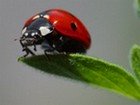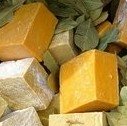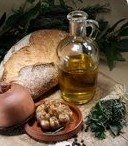keeping the color and flavor in butter making
by Gerald
(CT, USA)
I had issues with the water when making butter. I notice that the much of the flavor and some of the color(beautiful yellow) goes away when I use cold water to wash the butter.
Can you be more specific on how to retain the flavor and color of the butter when washing it.
What kind of water? Would distilled water work or what brand, be more specific.
And should I use the water only to get the butter chunks cold(by leaving the butter in the water for some minutes) and work them in the absence of water, or work them within the water?
++++++++++++++++++++++++++++++++++++++++++++++++++
Making butter successfully can be affected by so many factors during the process; the quality of the cream, what the cows were fed, the quality of the water, the type of salt used, standards of hygiene, and even the weather can adversely affect your butter making.
Usually, any water that is potable can be used for making butter. You don't say what water you have been using in the past, but if you have having problems with your current water supply, then I would definitely look at using bottled water for making your butter.
There is so much wrong with the water that comes through the mains, often too heavily chlorinated, fluorated, too hard, too soft, that these qualities of the water will be passed on to your butter.
Now some people have great tap water, and never have a problem with the flavor of their butter, but if this is not you, then change. But just remember that whatever water you use, it has to be chilled.
The natural color of your butter is determined by the time of year and what the cows are fed. In June, when the new spring grass has emerged, your butter will be a far deeper color than any other time of year.
If you want to maintain that color throughout the year, then you will have to resort to artificial colorants. I am not a fan of this, and really, the deep yellow is for aesthetics only. It does not change the flavor of the butter. However, if you want to add artificial colorants do it as you add the cream to the churn, before you start churning.
When it comes to butter making and flavor there are 4 factors that will affect this:
The cream should be ripened before being churned. 65°F - 70°F is ideal- at these temperatures there will be growth of the bacteria which produces the desirable flavors in the cream. If you end up over ripening your cream you will end up with
a butter that does not have a great flavor. Stir the cream frequently during rippening to insure uniformity of flavor.
Washing the butter is actually done to improve the flavor of the butter. So if the flavor of your butter is not there, then you need to make sure that your cream is fresh and your water is not contaminated with chlorine etc. that would affect it.
As already mentioned, you want to use pure, clear water for washing butter and it should be no more than 3 degrees colder or warmer than the buttermilk. Use the same amount of water as there is buttermilk.
You need to work the butter with the water as you want to get as much buttermilk out as possible. If you are confused at the process, look at the instructional video on making butter at the bottom of the page on this subject.
In fact there are 3 reasons for washing the butter:
1) To remove most of the buttermilk and improve the flavor
2) To improve the keeping quality
3) To firm up the butter so it can be handled better
When you have finished washing your butter, the butter should still be at the granular stage, that is little fat globules about the size of a pea or smaller.
Of course too much salt will spoil the flavor of your butter too, but the amount of salt used will vary.
Again there are 2 reasons for salting:
1) To improve the flavor
2) To act as a preservative to keep your butter from going rancid
The usual ratio of butter to salt is 1 pound of butter to 1/2 ounce or 1 1/2 ounces of salt. How much you add will be to your personal taste. I never use more than 3/4 ounce per pound.
How you work the butter can also affect the flavor. Make sure that when you have added the salt and worked the butter that you have distributed the salt well throughout the butter, that you have a firm, compact butter, and
most of the buttermilk has been worked out.
You don't want a grainy or gritty butter. This happens when the salt hasn't dissolved in the butter.
Your butter in the end should be firm and glossy in appearance, slightly yellow if not artificially colored, even bordering on white, and with a pleasant salty taste.
Did you find this page helpful?
Sharing is a way of saying, "Thanks!"
Follow Us and Keep Up to Date
Go back to the Home Page





